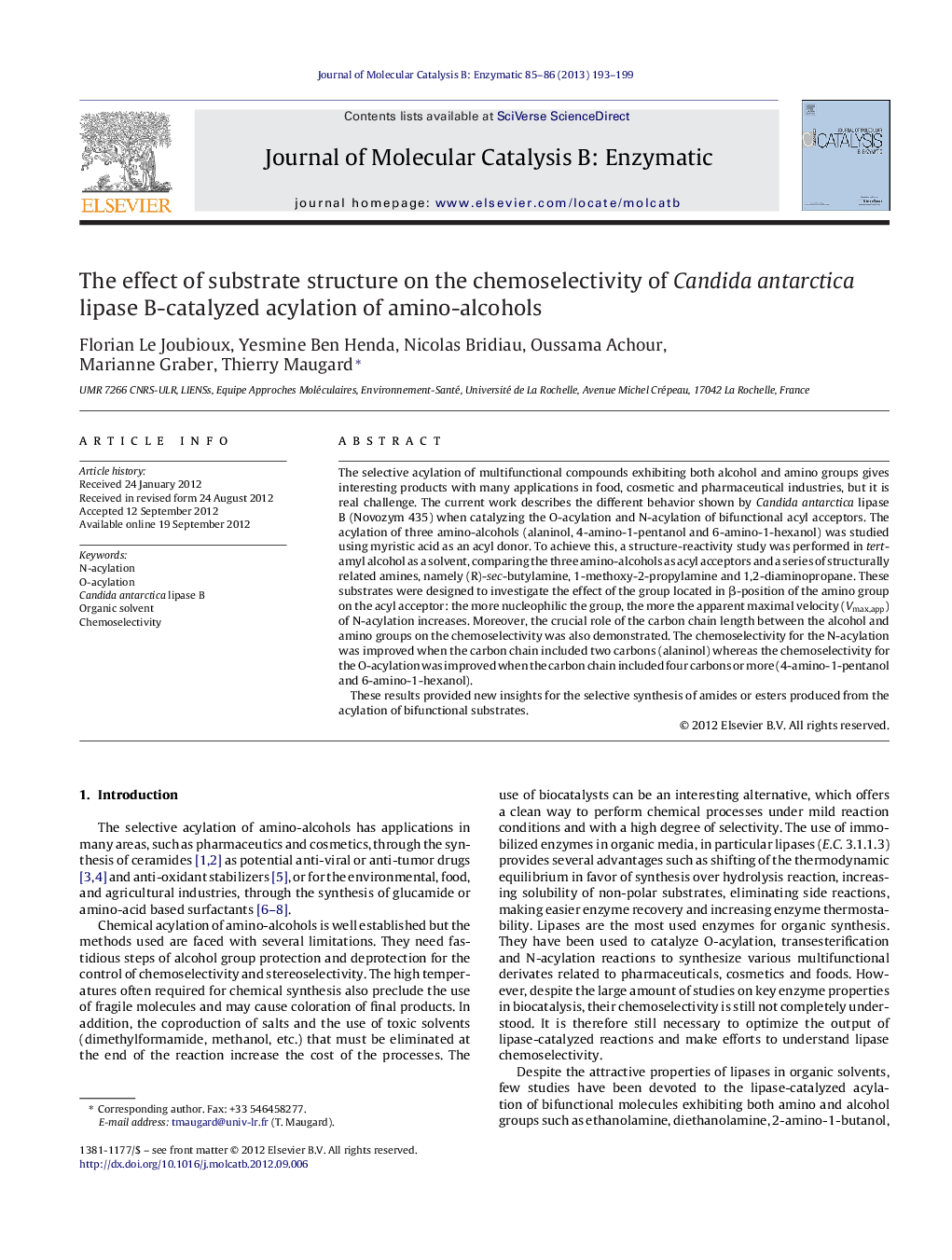| کد مقاله | کد نشریه | سال انتشار | مقاله انگلیسی | نسخه تمام متن |
|---|---|---|---|---|
| 70005 | 48805 | 2013 | 7 صفحه PDF | دانلود رایگان |

The selective acylation of multifunctional compounds exhibiting both alcohol and amino groups gives interesting products with many applications in food, cosmetic and pharmaceutical industries, but it is real challenge. The current work describes the different behavior shown by Candida antarctica lipase B (Novozym 435) when catalyzing the O-acylation and N-acylation of bifunctional acyl acceptors. The acylation of three amino-alcohols (alaninol, 4-amino-1-pentanol and 6-amino-1-hexanol) was studied using myristic acid as an acyl donor. To achieve this, a structure-reactivity study was performed in tert-amyl alcohol as a solvent, comparing the three amino-alcohols as acyl acceptors and a series of structurally related amines, namely (R)-sec-butylamine, 1-methoxy-2-propylamine and 1,2-diaminopropane. These substrates were designed to investigate the effect of the group located in β-position of the amino group on the acyl acceptor: the more nucleophilic the group, the more the apparent maximal velocity (Vmax,app) of N-acylation increases. Moreover, the crucial role of the carbon chain length between the alcohol and amino groups on the chemoselectivity was also demonstrated. The chemoselectivity for the N-acylation was improved when the carbon chain included two carbons (alaninol) whereas the chemoselectivity for the O-acylation was improved when the carbon chain included four carbons or more (4-amino-1-pentanol and 6-amino-1-hexanol).These results provided new insights for the selective synthesis of amides or esters produced from the acylation of bifunctional substrates.
Figure optionsDownload as PowerPoint slideHighlights
► A nucleophilic group in β of an amino group enhances rates of N-acylation.
► The more nucleophilic group in β the higher rates of N-acylation.
► Rates of N-acylation were improved for the short chain amino-alcohol.
► Rates of O-acylation were improved for the long chains amino-alcohols.
Journal: Journal of Molecular Catalysis B: Enzymatic - Volumes 85–86, January 2013, Pages 193–199